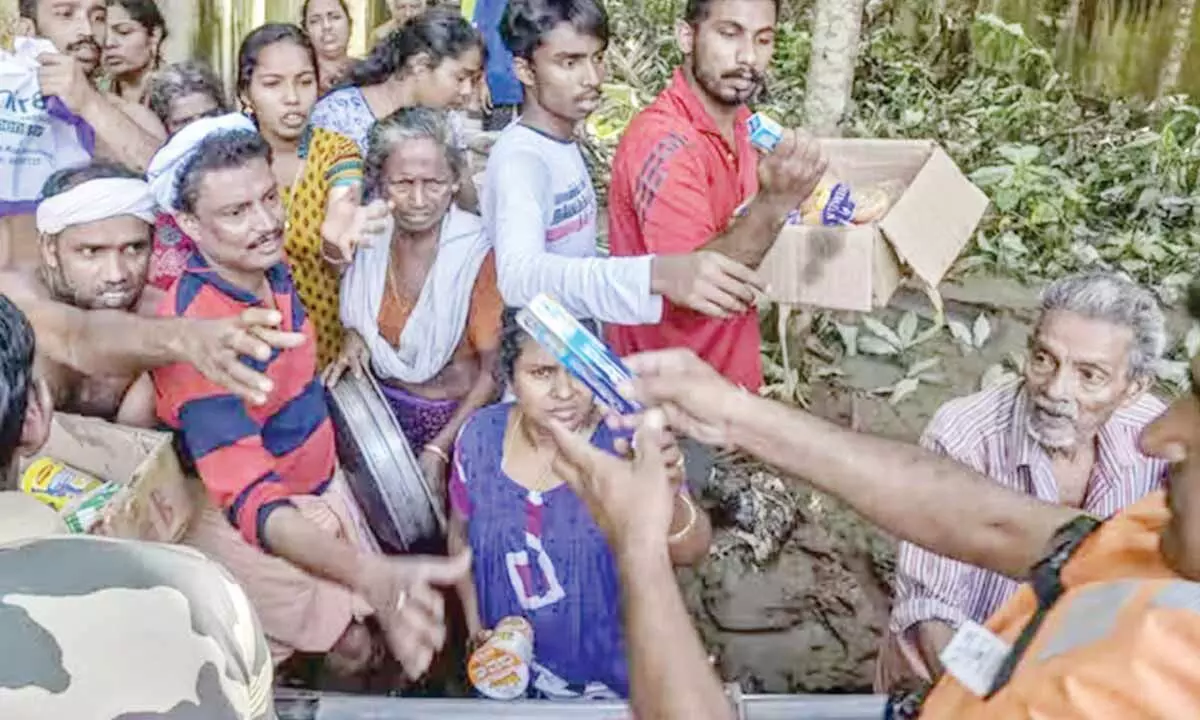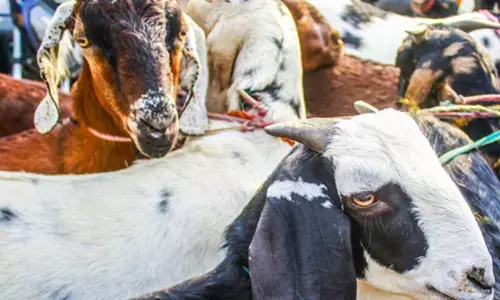Why Kerala is a hotbed of diseases

Why Kerala is a hotbed of diseases
At a time when the spectre of coronavirus still looms large over India, especially in Kerala — which is among the top five affected states — the southern state reported India's first case of monkeypox on Thursday.
At a time when the spectre of coronavirus still looms large over India, especially in Kerala — which is among the top five affected states — the southern state reported India's first case of monkeypox on Thursday. The Centre rushed a multi-disciplinary team to Kerala after a 35-year-old man from Kollam district tested positive for the disease.As per officials, the man had arrived from UAE on 12 July and was confirmed infected after his samples were sent to the National Institute of Virology.
Incidentally, Kerala is also where the first case of Covid-19 infection was recorded. On 27 January 2020, a 20-year-old female presented to the Emergency Department in General Hospital, Thrissur, Kerala, with a one-day history of dry cough and sore throat. It was later reported that the 20-year-old was a student studying in Wuhan University and had travelled to India.
The state has seen epidemics of dengue, chikungunya, Kyasanur forest disease, West Nile Fever, H1N1, Nipah, anthrax, coronavirus, prompting many to ask "why is the state turning out to be a hot spot of viral attacks?"
Viral outbreaks in Kerala
Kerala has witnessed multiple health scares with the outbreak of diseases such as Chikungunya, Japanese encephalitis, Acute Encephalitis Syndrome, West Nile encephalitis, Dengue, Viral Hepatitis, Nipah, Swine Flu and COVID-19.
In recent times, the state has also seen cases of Zika virus as well as anthrax.
When COVID-19 broke out in the country, it was Kerala that saw the first such infection. As the state witnessed a climb in cases, it declared a health emergency and took significant steps to control the virus.
Its handling of the virus earned it praise with its rigorous and focused testing, containment, community support and contact tracing. However, the situation went awry quickly and the state started recording high number of infections as well as a high COVID death rate.
In July itself, the state has seen a four-time increase in COVID deaths from the previous month. The Times of India reported that Kerala's COVID case fatality rate (CFR) is now 1.21 per cent and the state now leads with most cases and deaths in the country during the present surge.
In September 2021, Kerala also saw a Nipah virus scare when a 12-year-old boy, who had contracted the disease, died in a private hospital in Kozhikode. Following the boy's death, public health authorities swung into action, contact-tracing friends, family members and health workers. They identified and isolated 251 people, including 30 close family members. Eleven samples from those in close contact with the boy were sent for testing. However, they tested negative.
The death of the boy brought back horrific memories of 2018 when the state recorded 18 confirmed cases in Kozhikode, of which 17 resulted in death.August of last year also saw Kerala health officials battling a Zika virus outbreak. In 2021, the state recorded a total of 66 cases, mostly from Thiruvananthapuram. The first case was confirmed in a 24-year-old pregnant woman on the outskirts of the capital on 8 July.
After rigorous screening and testing, the state, as per a news report on 15 August, declared that the Zika virus outbreak had been brought under control with no cases of new infection. Earlier this month, Kerala health officials also confirmed the presence of anthrax in Athirappilly of Thrissur district.
"Wild boars have died en masse in the Athirappilly forest area. Subsequently, the Health Department, the Animal Husbandry Department and the Forest Department conducted an investigation. Samples of these were tested to confirm the case of anthrax infection," Health Minister Veena George had said.
Why Kerala though?
One of the main reasons why Kerala is vulnerable to viral attacks could be attributed to the fact that Keralites are spread across the globe; the state is well-connected to various parts of the world.
A large number of doctors and nurses from Kerala work in various countries. There are students who pursue medical courses abroad. These categories face the occupational hazard of viral attacks.
According to an article in the journal Nature, depletion of forests, high population density of domestic animals as well as high population density of humans could be other triggers.
Scientists and medical experts mention that as human activity encroaches on the natural habitat, there is a greater risk of the transfer of viral pathogens or "spill over" to humans as wild species are in greater contact with people and domestic animals.
Dr TS Anish, community medicine chief of Thiruvananthapuram Medical College, in a report to Mathrubhumi said that human expansion into forests of the Western Ghats and the reduction of fruits in the forests, attract bats to human settlements in Kerala. These bats could be carrying various diseases, hence making outbreaks even more possible.
Speaking on the same, he told a daily, "Civet cats have almost become urban animals as their natural habitats have been wiped out. These animals are believed to be the mediators for the pathogen that caused Severe Acute Respiratory Syndrome (SARS). Bats, which lost their natural habitats, moved into human habitations. These animals are now considered as the reservoirs of Nipah and Ebola virus."
Moreover, changed land patterns and an absence of effective waste management systems has also led to an increase in rodents. Rodents such as rats spread diseases such as leptospirosis. Without addressing the habitat changes and destruction of forest ecosystems, one cannot address the issue of zoonotic diseases.
Is there a solution?
Experts have been advocating the adoption of a coordinated multidisciplinary 'One Health' approach to effectively and efficiently tackle the global emergence and re-emergence of zoonotic diseases.
As of now, most government departments — human health, veterinary/agricultural, and environmental agencies — work in isolation with separate mandates and budgets. However, One Health asks them to work on common issues that impact each of their sectors. This holistic view recognises that the health of humans and animals is connected to the health of our shared environment.
(Courtesy: Firstpost)


















